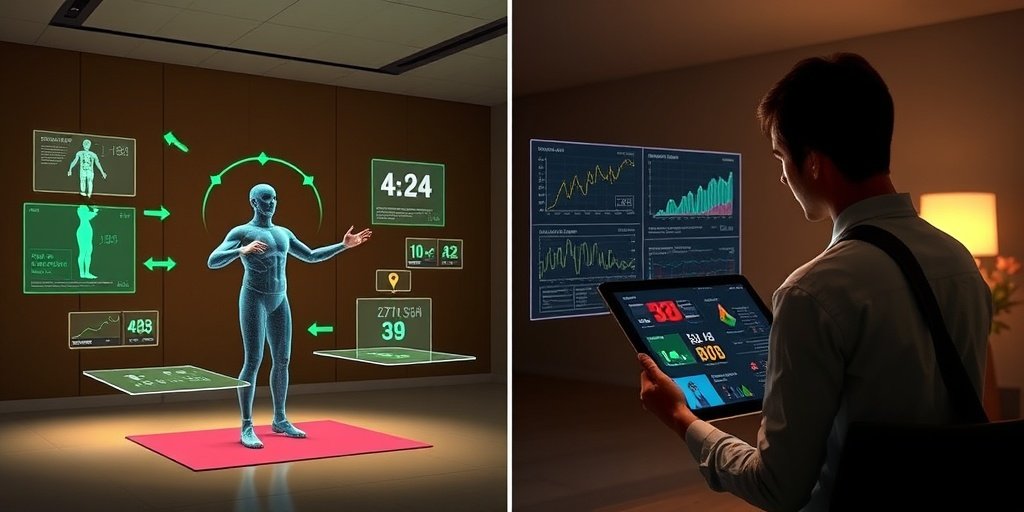⚡ Quick Summary
This study introduces multiscale feature learning to enhance the performance of activity recognition algorithms in rehabilitation monitoring systems. The multiscale Transformer model achieved an impressive average accuracy of 93%, significantly outperforming traditional methods.
🔍 Key Details
- 📊 Dataset: Multi-channel time series data from rehabilitation exercises
- 🧩 Features used: Multiscale features extracted through advanced architectures
- ⚙️ Technology: Multiscale tCNN, CNN-LSTM, ConvLSTM, and Transformer models
- 🏆 Performance: Multiscale Transformer: 93%, tCNN: 91%, CNN-LSTM: 90%, ConvLSTM: 89%
🔑 Key Takeaways
- 📊 Multiscale algorithms provide a robust solution for tracking rehabilitation exercises.
- 💡 Enhanced performance is particularly notable among patient subjects.
- 🏆 The multiscale Transformer model emerged as the most effective, achieving an average accuracy of 93%.
- 🤖 Traditional methods were consistently outperformed by multiscale approaches.
- 🌍 This research highlights the importance of accurate exercise monitoring in telemedicine.
- 🧠 Advanced architectures were developed to process complex time series data.
- 📈 The study emphasizes the need for personalized treatment in rehabilitation.

📚 Background
Rehabilitation monitoring systems play a crucial role in tracking patient progress and ensuring effective treatment. However, traditional activity recognition algorithms often struggle with performance disparities across different subjects, particularly those with varying motion-related characteristics. This study aims to address these challenges by introducing innovative multiscale feature learning techniques.
🗒️ Study
The research focused on developing advanced algorithms capable of accurately tracking and quantifying rehabilitation exercises. By utilizing multi-channel time series data, the study tested various architectures, including multiscale tCNN, CNN-LSTM, ConvLSTM, and the multiscale Transformer, to extract features at different scales.
📈 Results
The findings revealed that the multiscale algorithms significantly outperformed traditional approaches. The multiscale Transformer achieved the highest average accuracy of 93%, followed closely by the multiscale tCNN at 91% and the CNN-LSTM at 90%. The ConvLSTM also demonstrated strong performance with an accuracy of 89%.
🌍 Impact and Implications
This research underscores the critical need for advanced methods in activity recognition systems, especially in healthcare settings. Accurate exercise monitoring is becoming increasingly essential for effective and personalized treatment in telemedicine services. The implementation of these multiscale algorithms could lead to improved patient outcomes and more tailored rehabilitation programs.
🔮 Conclusion
The study highlights the transformative potential of multiscale feature learning in rehabilitation monitoring systems. By enhancing activity recognition accuracy, healthcare professionals can provide better support for patients undergoing rehabilitation. The future of telemedicine looks promising with the integration of these advanced technologies, paving the way for more effective and personalized treatment options.
💬 Your comments
What are your thoughts on the advancements in activity recognition for rehabilitation? We would love to hear your insights! 💬 Leave your comments below or connect with us on social media:
Multiscale activity recognition algorithms to improve cross-subjects performance resilience in rehabilitation monitoring systems.
Abstract
BACKGROUND AND OBJECTIVE: This study introduces multiscale feature learning to develop more robust and resilient activity recognition algorithms, aimed at accurately tracking and quantifying rehabilitation exercises while minimizing performance disparities across subjects with varying motion-related characteristics.
METHODS: Advanced architectures designed to process multi-channel time series data using two parallel branches that extract features at different scales were developed and tested.
RESULTS: The results indicate that multiscale algorithms consistently outperform traditional approaches, demonstrating enhanced performance, particularly among patient subjects. Specifically, the multiscale tCNN and multiscale CNN-LSTM achieved accuracies of 91% and 90%, respectively, while the multiscale ConvLSTM maintained strong performance at 89%. Notably, the multiscale Transformer emerged as the most effective model, achieving the best average accuracy of 93%.
CONCLUSIONS: This research underscores the need to explore advanced methods for enhancing activity recognition systems in healthcare, where accurate exercise monitoring and evaluation are becoming essential for effective and personalized treatment in telemedicine services.
Author: [‘Mennella C’, ‘Esposito M’, ‘Pietro G’, ‘Maniscalco U’]
Journal: Comput Methods Programs Biomed
Citation: Mennella C, et al. Multiscale activity recognition algorithms to improve cross-subjects performance resilience in rehabilitation monitoring systems. Multiscale activity recognition algorithms to improve cross-subjects performance resilience in rehabilitation monitoring systems. 2025; 267:108792. doi: 10.1016/j.cmpb.2025.108792